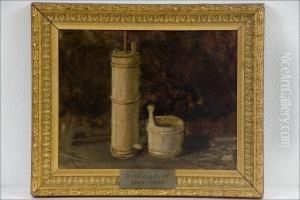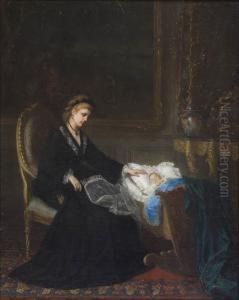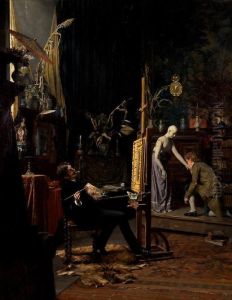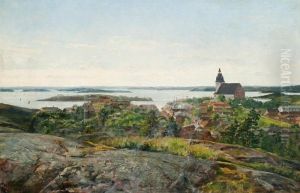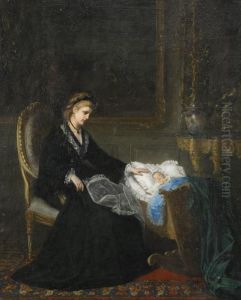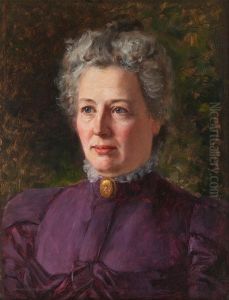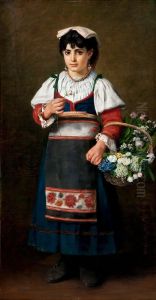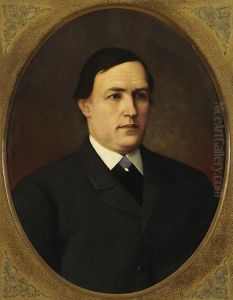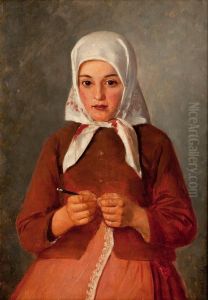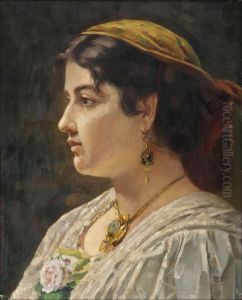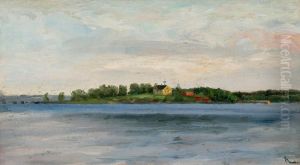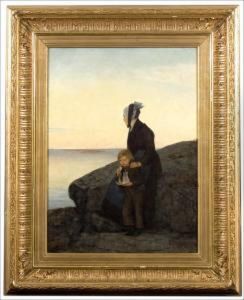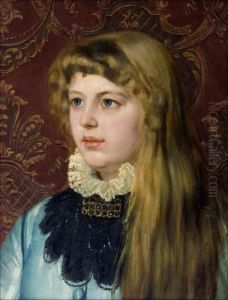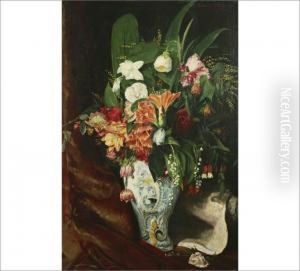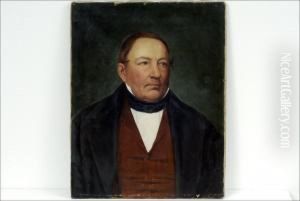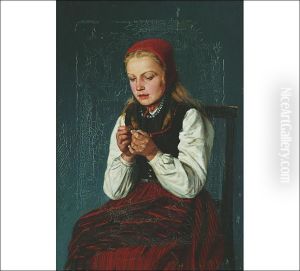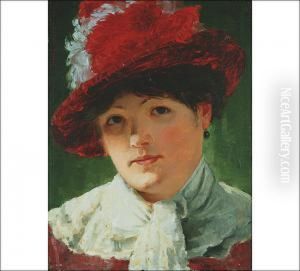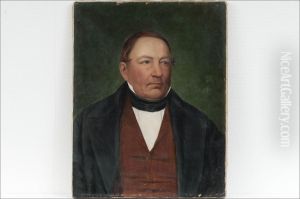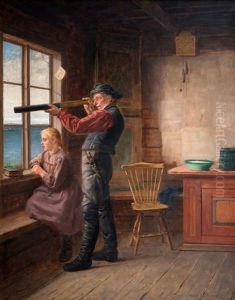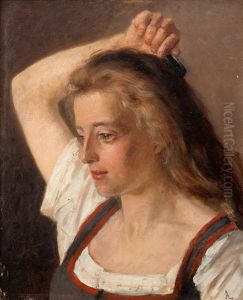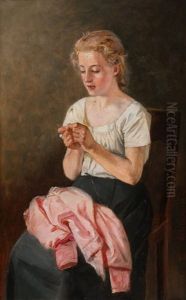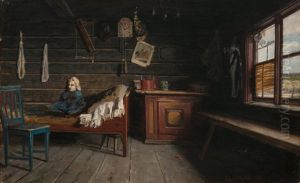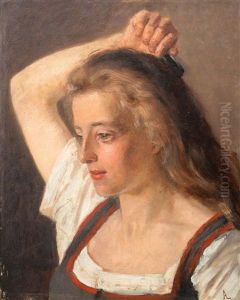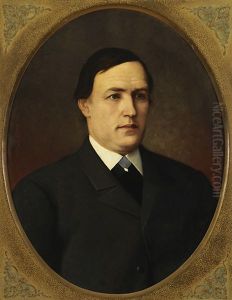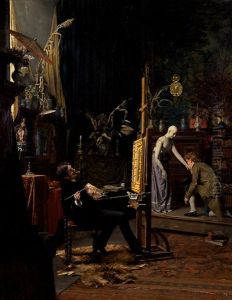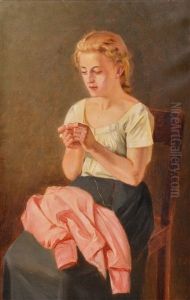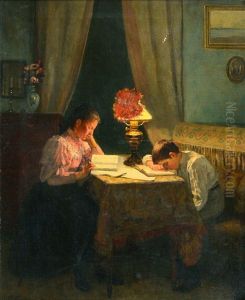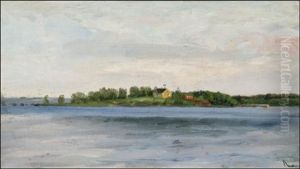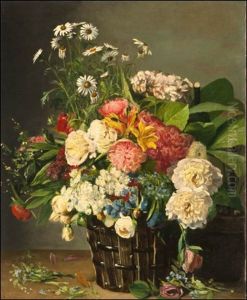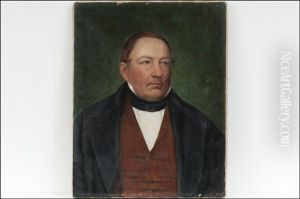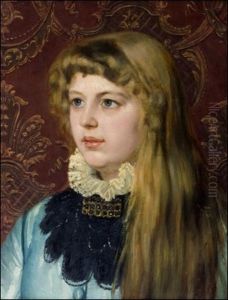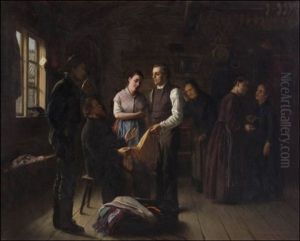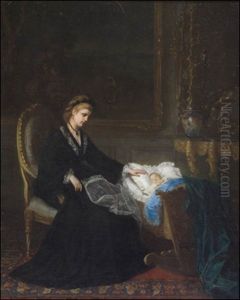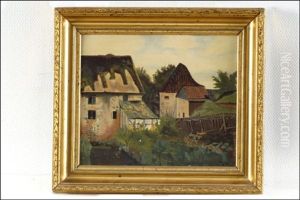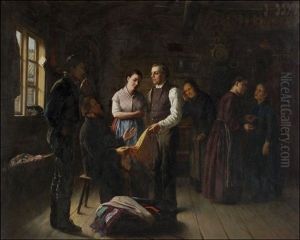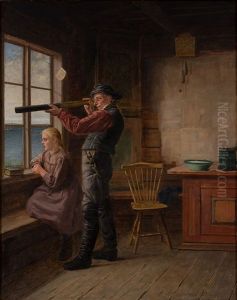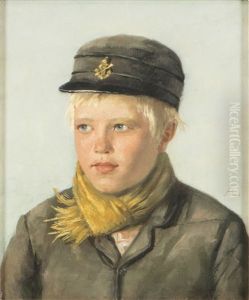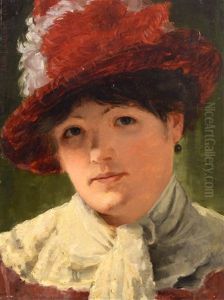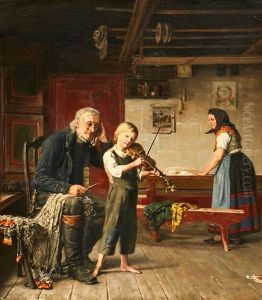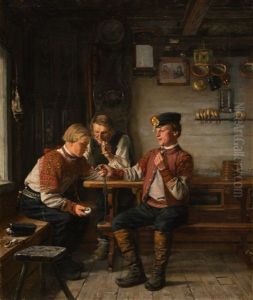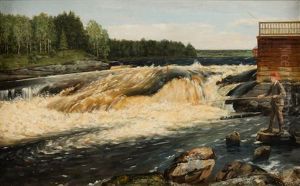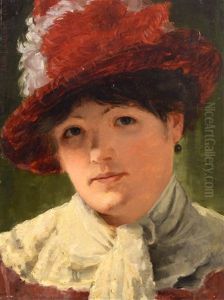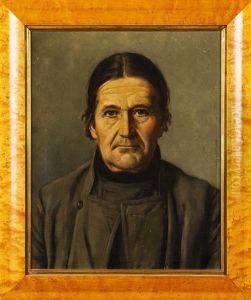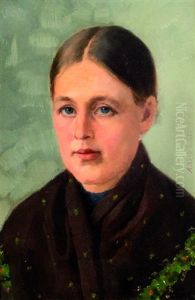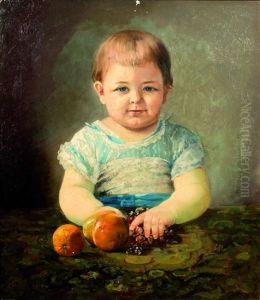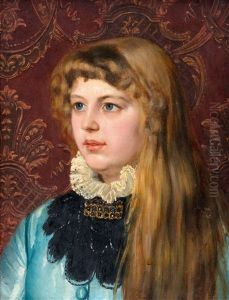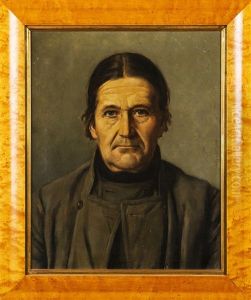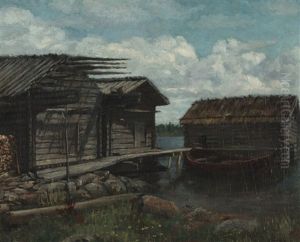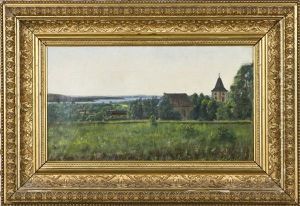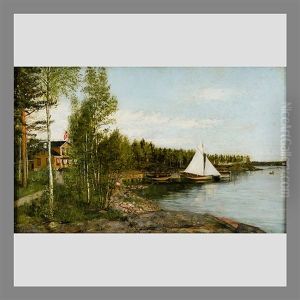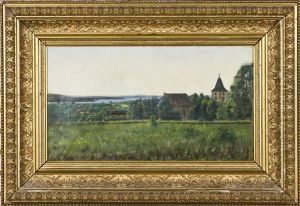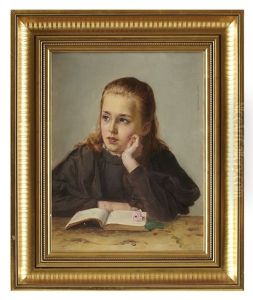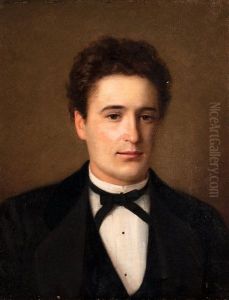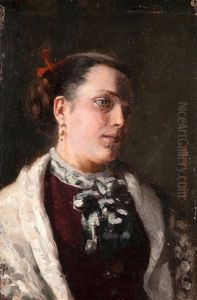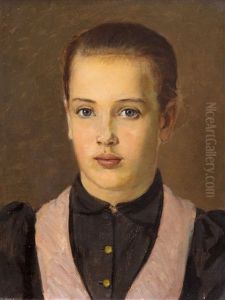Arvid Liljelund Paintings
Arvid Liljelund was a Finnish painter born on April 13, 1856, in Vyborg, which was at the time part of the Grand Duchy of Finland in the Russian Empire. He is known for his portraits, genre scenes, and historical paintings. Liljelund studied at the Drawing School of the Finnish Art Society from 1873 to 1878 and later continued his education at the Royal Swedish Academy of Arts in Stockholm.
Liljelund was part of the vibrant Finnish art scene of the late 19th century. He was influenced by his contemporaries in the Nordic countries and by the broader European art movements of the time. His works often reflect a naturalistic style, capturing the character and mood of his subjects with a sensitive and realistic touch.
Throughout his career, Liljelund was active in the cultural life of Finland. He participated in numerous exhibitions, both in Finland and abroad, and his paintings were well-received by critics and the public alike. He painted many prominent Finnish figures of his time, contributing to the documentation of the country's cultural and social history.
In addition to his portraits, Arvid Liljelund is also remembered for his depictions of Finnish rural life. His genre scenes often contain elements of folklore and tradition, providing insight into the everyday lives of Finnish people during the late 19th and early 20th centuries.
Liljelund's historical paintings are significant as well. His works in this genre often portray key events and figures in Finnish history, imbuing them with a sense of national pride and identity during a period when Finland was striving for greater autonomy from Russia.
Arvid Liljelund's legacy in Finnish art is preserved through his contributions to the national identity and his portrayal of the Finnish people and landscapes. His works can be found in several Finnish museums, including the Ateneum in Helsinki. He passed away on March 17, 1936, in Helsinki, leaving behind a body of work that continues to be celebrated for its cultural and historical importance.
